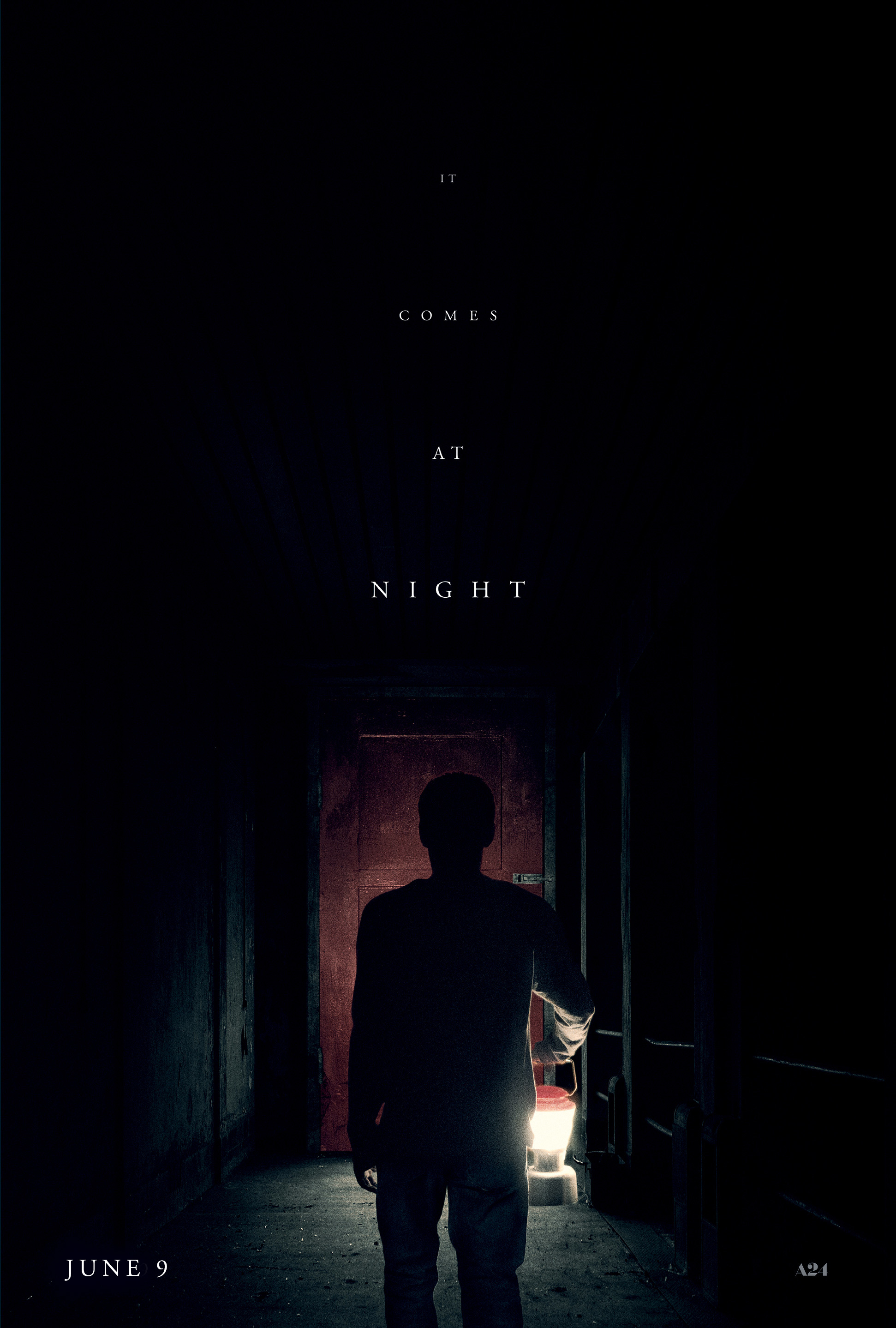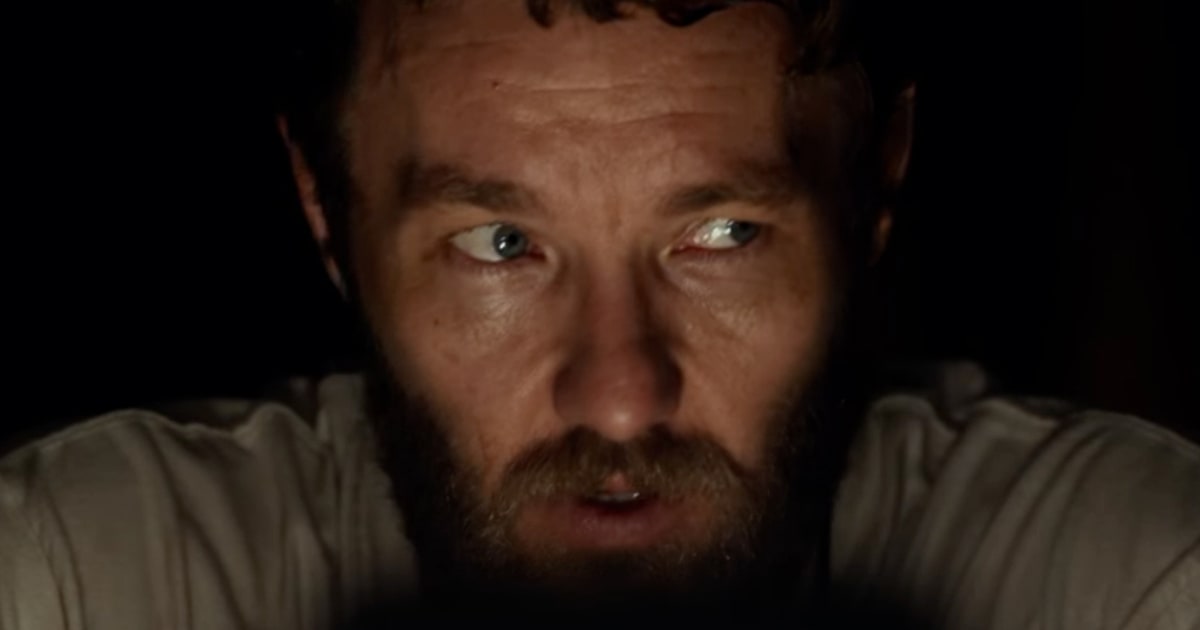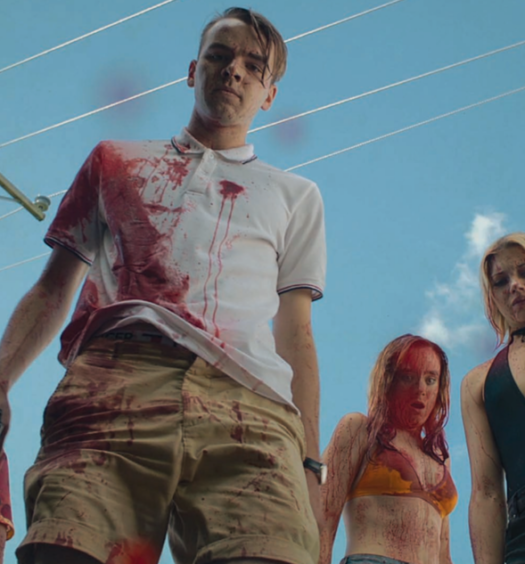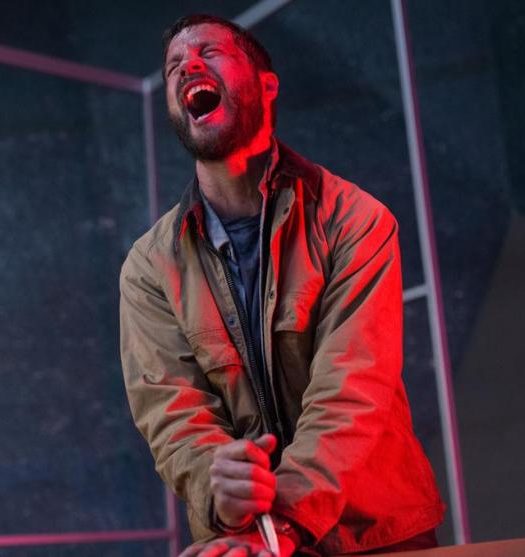By definition, horror is an intense feeling of fear, shock, or disgust. It’s subjective; therefore, not boxed in by limitations. Fear comes in a variety of ways, and it’s not one size fits all. All of this to serve as a reminder that even the atypical can bring an overwhelming amount of terror, as is the case in writer/director Trey Edward Shults sophomore feature. The very title of the film invokes thoughts of creatures or vampires, but Shults takes an unexpected approach far more grounded in realism. It’s downright petrifying.
It’s one of the most nerve-shredding experiences on film.
The film opens with the camera’s gaze fixated on an older man, his eyes strange and vacant, and his skin covered in pus-filled boils and darkened veins. From there we’re introduced to the man’s family; a small trio that lives in a remote home nestled deep in the woods. It’s a brutal introduction to a world where a Bubonic plague inspired pandemic long since ravaged the population; forcing survivors into desperate isolation. The taciturn family patriarch, Paul (Joel Edgerton), keeps his family safe with a strict set of rules. The hope is to keep the remaining population, and the plague along with it, at bay.
Written by Shults while he was in Texas, in a bad state of mind while dealing with his father’s cancer, the underlying theme is about how people respond to fear, especially when confronted with death. It’s not pretty. While the film doesn’t contain any familiar elements of horror on paper, it’s one of the most nerve-shredding experiences on film. Shults makes every emotion on screen tangible; desperation, fear, anger, and melancholy are palpable.
Both the night and fear itself become personified, each becoming their own characters that contribute to the oppressive dread that leaves viewers gasping for breath. Shults use of practical lighting during evening sequences elevates the atmosphere in impressive ways; it gives the sequences at night true authenticity and feels as though death and horror lurks in the shadows in wait of prey.
It’s a visceral assault on every level; there’s a claustrophobic, atmospheric dread that tests your nerves, and there’s a heartbreaking, emotional center that adds a thought-provoking level of devastation.
For all its primal, visual splendor, the character study of paranoia, dread, and human survival is boosted by its tremendous cast. Joel Edgerton shines as the rough patriarch hardened by making difficult choices to protect his family. Yet, it’s Kelvin Harrison Jr. as Travis, the teen son of Paul and Carmen Ejogo’s Sarah, that steals the film. The heavy burden of growing up in this setting takes a psychological and emotional toll, yet the naivety of youth allows for a rare glimpse of hope when the rest of the world is so dour and bleak. Harrison Jr. is not only the audience proxy for understanding this world, but he deftly balances the nuanced layers of his character.
This isn’t horror in the traditional sense, but make no mistake; it’s a horror film. It’s a visceral assault on every level; there’s a claustrophobic, atmospheric dread that tests your nerves, and there’s a heartbreaking, emotional center that adds a thought-provoking level of devastation. It’s an intelligent reflection of death and humanity, and that Shults can make the viewer feel what’s on screen makes every feature he makes one worth watching. It Comes at Night won’t be the feature that everyone was expecting, nor will it be the one that everyone wanted, but it perhaps will be the most core-shaking, most talked about genre film of the year.
It Comes at Night screened as a work-in-progress at the Overlook Film Festival, and will be released in theaters on June 9, 2017.
It Comes at Night [Overlook Film Festival Review]
Bold































